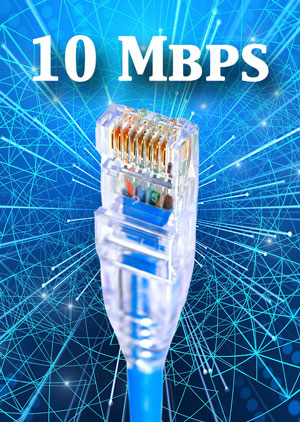 What’s Happening to Legacy Landlines?
What’s Happening to Legacy Landlines?T1 lines were the first digital telecom services created by Bell Labs and put into service to transport multiple telephone calls. They started being used for business, first for PBX telephone lines and then for digital private lines and dedicated Internet access. The oldest have been around more than 50 years. In the meantime, technology has advanced, most notably with the introduction of fiber optic cables, hybrid fiber coax, and microwave fixed wireless.
While millions of analog phone lines, T1 lines & ISDN PRI, and DS3 services have been successfully employed over the last half century, service providers are now beginning to “sunset” these technologies in favor fiber and wireless. Sunsetting involves no longer offering new connections, raising prices on existing services to cover increased maintenance costs, and eventually refusing to renew contracts when they expire. The copper lines and their associated central office equipment are effectively retired, even though it may be some time before they are removed and recycled.
Part of the problem is that the copper cables have been in the ground for so long that they are deteriorating. When there aren’t enough extra pairs to replace corroded wires or bad connections, new cables must be pulled or buried and that is very expensive. What makes it less attractive is that so many business customers are migrating to fiber anyway for increased bandwidth and connections to the cloud infrastructure. At some point it is no longer worth maintaining these legacy services.
Fiber Steps In to Replace Copper
When you first ordered your T1 or T3 (DS3) line, fiber optic service may not have been available. What was available cost a pretty penny. You needed to be a very large organization with a large need and even larger budget to have OC3, OC12 or OC48 SONET fiber installed. Two developments have changed all that.
First is the invention of Ethernet over Fiber as an alternative to the telephone-centric SONET. EoF easily connects to Ethernet LANs and is readily scalable to whatever bandwidth you need. Competitive service providers who entered the market following deregulation of the telecom industry adapted Ethernet over Fiber for their regional and national networks. This allowed them to offer much lower cost options to business customers.
The second development was the advancement of cellular broadband from 2G to 3G to 4G and now 5G. Phone companies got away with using their T1 lines to feed the cell towers until 4G LTE became the standard. Then even multiple T1 lines couldn’t provide enough bandwidth to support the faster broadband. Fiber optic or point to point microwave is needed to support today’s cell towers. Fiber has been installed far and wide just to have enough bandwidth for smartphones. A side benefit is that fiber is readily available for other connections in areas far beyond the metro business district.
Fiber Now Priced Similar to Copper
The cost of T1 lines declined for decades but now looks to increase again as time goes on. With fewer customers and a desire to sunset the service, expect that your T1 line will cost more in the future, if you can even continue the service. Meanwhile, fiber optic service has rapidly declined in price due to expanded deployment and competitive pressures. So much so that the cost of 10 Mbps fiber service is now roughly the same as a single T1 line. If you are bonding two T1 lines to get 3 Mbps bandwidth, you’ll triple your bandwidth and actually pay less by switching over to fiber.
Are you faced with increased T1 costs and service disconnects or simply want to get more bandwidth for the same budget? If so, then get competitive quotes on Ethernet over Fiber bandwidth services available for your business location.

